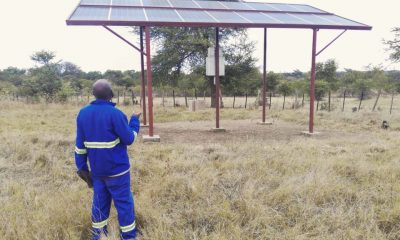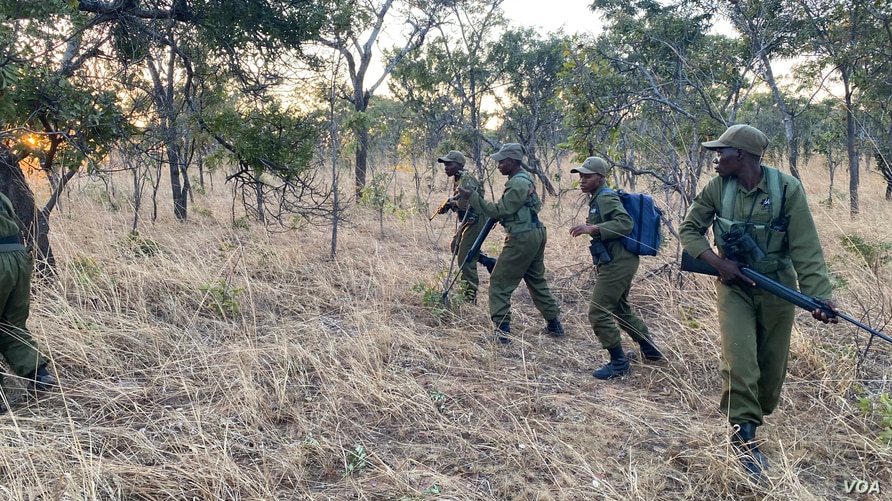BY CLAYTON MOYO
“Ah, we won’t be having this crew in the next five years. “
“They are drinking and smoking themselves to oblivion,” says one of the patriarchs as we slaughter a neighbour’s beast in my village in southwestern Zimbabwe over the weekend.
He says so as he points at one of the young lads who has taken a break to gulp down a mouthful from a small bottle of what has become a popular alcoholic beverage across rural and high-density suburbs in Zimbabwe’s urban centres.
The alcoholic volume of the beverage is not immediately given in the package, as is the norm, but observing the sobriety plunge of one who indulges in a few gulps gives absolute pointers of extraordinary potency.
In the neighbour’s cattle kraal where we slaughter the beast in preparation for a feast, there are about five more young lads who are sharing the beverage, each small empty bottle thrown away goes with a substantial dosage of inhibitions and the chatter constantly threatens to teeter into a brawl.
They are not the only ones who pass the time brawling over alcohol.
In a period of more than a month, I have travelled to many parts of Matabeleland South and Bulawayo provinces coordinating a media and information literacy programme, and the participants in our meetings have been predominantly young women and the elderly.
After a few meetings, my curiosity gives in and I inquire.
“If you care so much about having young men in your meetings, go and conduct these training sessions from that bottle store,” said Edna Mpala, an elderly lady who oversees activities at Nyandeni Community Training Centre in Matabeleland South.
“We have lost them. They have all become useless.”
It is not too hard to establish why young people in rural and urban Zimbabwe have become “useless”.
Figuring out Zimbabwe’s unemployment rate is a fool’s errand. Convincing figures are elusive and some estimates go as high as 95 percent.
The World Bank database suggests 5.2 percent as of 2021, suggesting the majority of Zimbabweans are at work.
At first glance, that is quite positive, except I quickly learn that in Zimbabwe we no longer agree on what unemployment is – the economy has become so informal that such important economic activity indicators like employment rates are fluid.
Making a quick buck selling roasted maize at a dusty street corner before municipality police scatter your stock? Tick, you are employed!
But for those living in the country, the picture is vivid. Once bustling industrial areas of Belmont and Thorngrove in the city of Bulawayo now have lifeless premises, grass overgrown right at the gates.
Where there is life, a church ministry of one sort or another has taken over, aggressively manufacturing desperate believers who endlessly spend week-day evenings and weekends petitioning their creator for a miracle that will drive out misery.
In desperate times, you choose a pacifier. Young people have a different opiate of choice.
The alcoholism and drug abuse crisis in Zimbabwe has become so palpable and alarming that even the usually non-responsive policymakers are acknowledging the problem.
For quite a while, the spectacle of zombie-like young bodies, numbed by a cocktail of substances from alcohol to whatever else the street provides, was a distant story on South African television, narrating the nyaope crisis in Johannesburg.
It was never a familiar sight in Zimbabwean communities until it was. The street pavements in Harare and Bulawayo now have, on top of uncollected heaps of refuse, unsightly human bodies, stupefied by an assortment of substances.
The streets of Zimbabwe’s towns are churning out rare destructive ingenuity on improvising harmful substances as alternatives to expensive drugs.
From boiling diapers and sanitary pads, extracting whatever chemicals hit the right places to concoctions of cough mixtures and alcohol, sobriety has no chance, the possibilities of escaping it are endless.
The concerns of the patriarch in my village are pretty valid. The consumption of copious amounts of alcohol and drugs is not leaving any healthy body behind. Mental health is already flashing red.
The World Health Organisation reports that up to 57% of mental health cases in Zimbabwe are induced by drug abuse.
Statistics often capture those who turn up at formal health institutions. Dealing with mental health illnesses in Zimbabwean society is much more complex than seeking treatment for other ailments.
The burden of shame that families carry when one member develops a mental health condition creates a whole lot of “under the radar” treatment activities that happen away from medical specialists who can diagnose and offer appropriate treatment.
Spiritual prophets and traditional healers are the go-to for ailments that are believed to be “into zabantu” — afflictions speculated to be caused by witchcraft. Mental health conditions are almost invariably believed to be stirred by the jealous agitations of a relative, neighbour or colleague. On such issues, medicines administered by doctors are believed to be impotent.
Spiritual prophets and traditional healers do not have standard treatment protocols like medical professionals, and anything goes.
That includes rituals that could worsen a patient’s mental condition.
Their shrines form the busy margins where mental patients are surreptitiously dragged by relatives.
Zimbabwe’s Mental Health Act guarantees the treatment of mental patients, and treatment and admission at government psychiatric hospitals are free of charge. Great, on paper of course, like most things in the country.
The Zimbabwean healthcare system is facing an all-embracing assault from the economic crisis which no longer has traceable phases, one cycle overrides another.
Currently, inflation that has spectacularly eroded the salaries and living conditions of health workers is emptying hospital wards. Nurses and doctors have updated their passports and found work elsewhere. Young doctors who used to bitterly complain on social media about their working conditions have gone curiously quiet. There is no point in noisily walking away.
In 2021, Zimbabwe launched the National Drug Master Plan, which “offers both an integrated and comprehensive approach that will address a range of drug-related issues”.
The background section of the plan already betrays the reluctance in tracing illicit drug use in the country as it cites statistics from the Zimbabwe Republic Police’s criminal investigations reports of 2012.
There is a yawning gap between then and 2021.
The plan rightly captures the causes of drug abuse – the first one being poverty.
For most young people, there is no doubt that poverty pushes them to illicit drug use.
The proposed implementation matrix looks comprehensive as it claims, except there is no control of the drug abusers’ factory – the economic mess.
As long as Zimbabwe provides no work opportunities for the young lads in my village in Matebeleland South and indeed the rest of the country, the small bottles of alcohol will litter the place and inebriated bodies will compete for space with uncollected refuse in alleyways and pavements.
Back in the neighbour’s kraal, we finish off the half-charred pieces of meat, coated with a bit of ash as is the tradition – when a beast falls, the men who slaughtered it have the first braai at the kraal.
The young lads agree among themselves that it is a perfect day for a proper binge, as the meat has set a “base” for more alcohol. – Mail & Guardian
This is an edited version of an essay that was a runner-up in this year’s Canon Collins Trust “Troubling Power” Essay Competition.
*Clayton Moyo, a Canon Collins PhD scholar, is a digital media enthusiast teaching broadcast media at the National University of Science and Technology in Zimbabwe. He shares media skills outside the university with citizen journalists and emerging media entrepreneurs.

 Slider3 years ago
Slider3 years ago
 National4 years ago
National4 years ago
 Tourism and Environment4 years ago
Tourism and Environment4 years ago
 Opinion4 years ago
Opinion4 years ago
 Special reports4 years ago
Special reports4 years ago
 National4 years ago
National4 years ago
 National3 years ago
National3 years ago
 National3 years ago
National3 years ago

